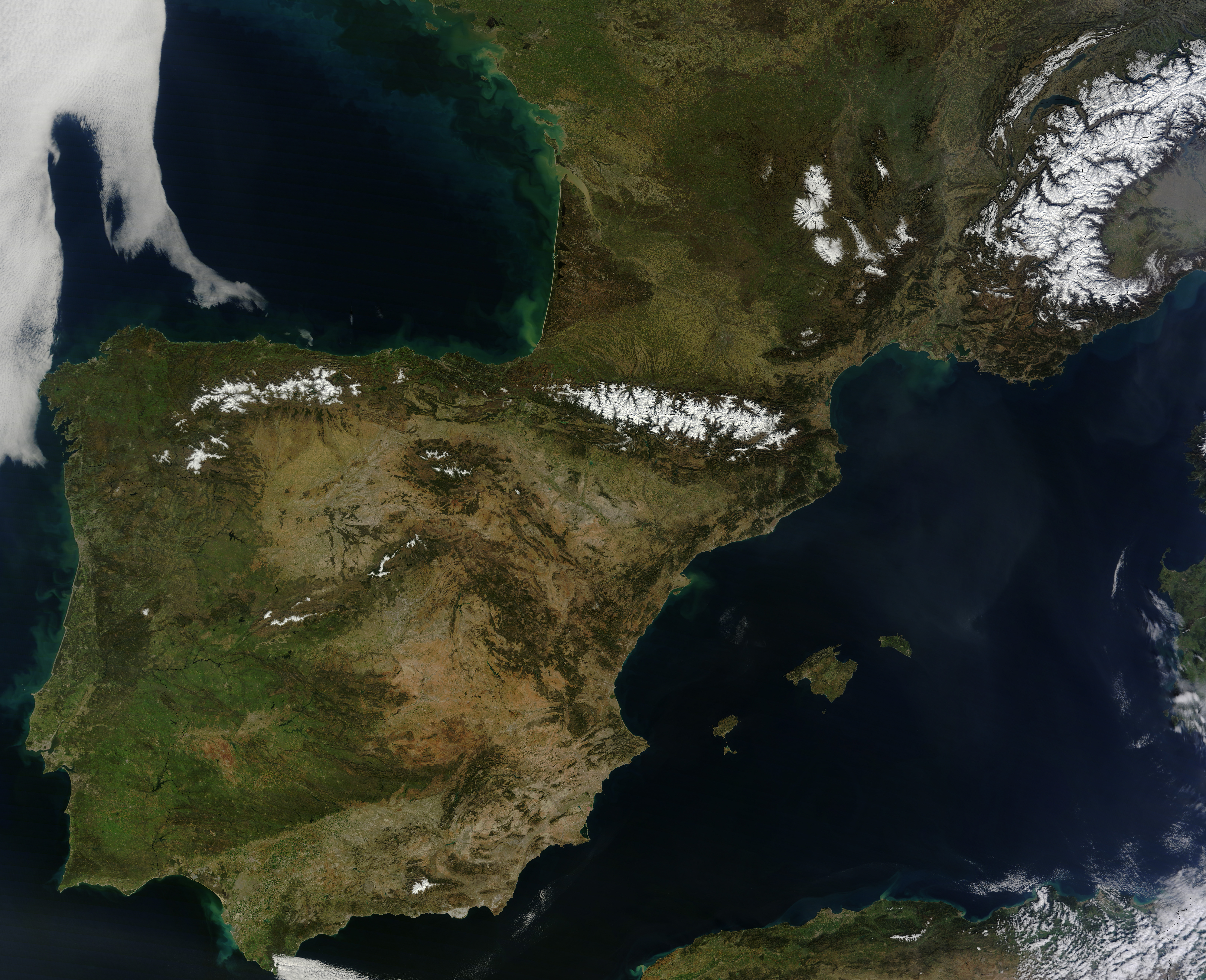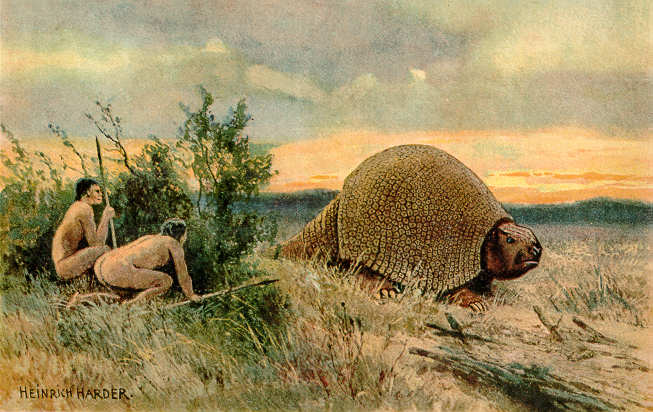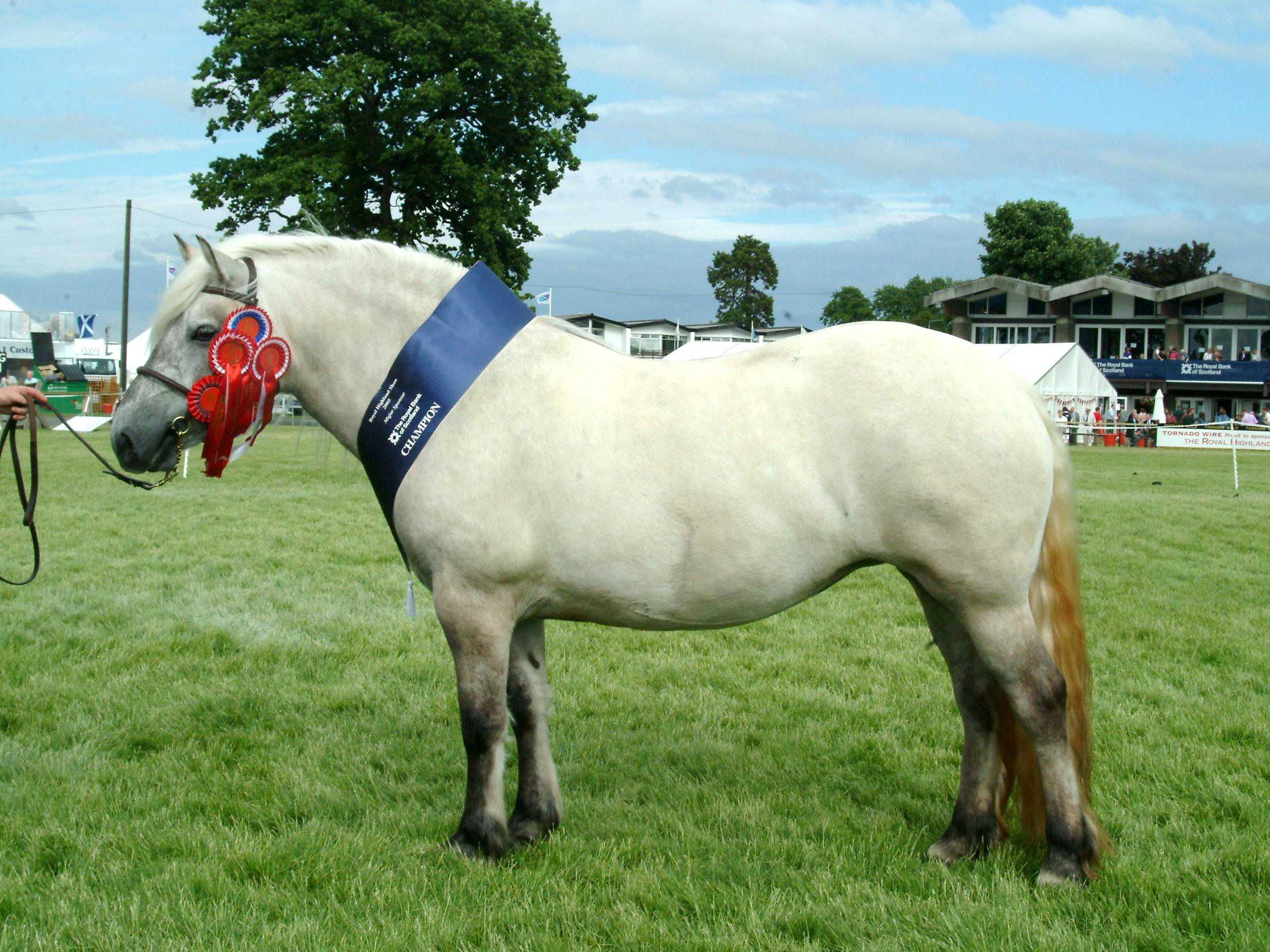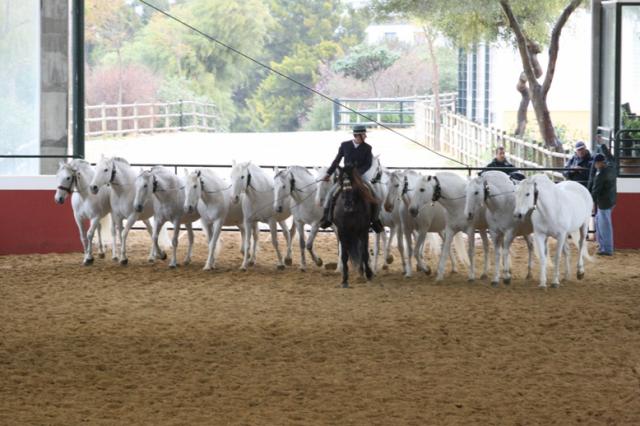|
Garrano
The Garrano is an endangered breed of pony from northern Portugal, part of the Iberian horse family, mainly used as a pack horse, for riding, and for light farm work. An ancient breed, the Garrano has remained largely unchanged for thousands of years but is in decline due to predation and loss of interest in breeding for agricultural use. It has many similarities with the Galician horse and the Dartmoor pony. History The horse is believed to be an ancient breed, with Northern Iberian Paleolithic cave paintings depicting horses with similar profiles. The similarities between the breed and the depicted animals lead to the conclusion that the breed's appearance has remained stable. There is genetic evidence that the horse originates in Celtic regions, with additional research suggesting the later introduction of males for breeding from north Europe. Through cross-breeding with the Andalusians brought over by the Spanish conquistadors and the local Sorraia horse, they produce ... [...More Info...] [...Related Items...] OR: [Wikipedia] [Google] [Baidu] |
Garrano PT
The Garrano is an endangered breed of pony from northern Portugal, part of the Iberian horse family, mainly used as a pack horse, for riding, and for light farm work. An ancient breed, the Garrano has remained largely unchanged for thousands of years but is in decline due to predation and loss of interest in breeding for agricultural use. It has many similarities with the Galician horse and the Dartmoor pony. History The horse is believed to be an ancient breed, with Northern Iberian Paleolithic cave paintings depicting horses with similar profiles. The similarities between the breed and the depicted animals lead to the conclusion that the breed's appearance has remained stable. There is genetic evidence that the horse originates in Celtic regions, with additional research suggesting the later introduction of males for breeding from north Europe. Through cross-breeding with the Andalusians brought over by the Spanish conquistadors and the local Sorraia horse, they produce ... [...More Info...] [...Related Items...] OR: [Wikipedia] [Google] [Baidu] |
Peneda-Gerês National Park
The Peneda-Gerês National Park ( pt, Parque Nacional da Peneda-Gerês, ), also known simply as Gerês, is a national park located in northern Portugal. Created in May 1971, it is the oldest protected area and the only national park in Portugal. It covers an area of , occupying the Districts of Viana do Castelo, Braga, and Vila Real and bordering the Spanish Baixa Limia – Serra do Xurés natural park to the north, with which forms the UNESCO biosphere reserve of Gerês-Xurés. Peneda-Gerês was given its name by its two main granite massifs, the Serra da Peneda and the Serra do Gerês which, with the Serra Amarela and the Serra do Soajo, constitute the park's highest peaks. On the other hand, the precipitous valleys, crossed by high flowing streams, host lush temperate broadleaf and mixed forests of oak and pine, being one of the last strongholds of the typical Atlantic European flora of Portugal, contrasting with an evolving Mediterranean biome. The park is also home to arou ... [...More Info...] [...Related Items...] OR: [Wikipedia] [Google] [Baidu] |
Galician Horse
, country= Spain , group1= , std1= The Galician or Galician Mountain Horse, es, , gl, , is a breed of small horse from Galicia, in north-western Spain. It is genetically very close to the Garrano breed of northern Portugal. It was in the past used as a war-horse and in agriculture; it is now raised for shows and riding. They are very useful for ranchwork. The horses are bay or black. History The most commonly accepted theory of the origin of the Gallego is that it, like other small breeds of the northern part of the Iberian peninsula, descends from small dark-coloured horses introduced by Celtic immigrants in the sixth century BC. In the Middle Ages these horses were rented or swapped for other horses at the border between Galicia and Castile, since the Galician was more sturdy and suitable for the rugged landscape of the country.O'Flanagan, P. (1996), in "Xeografía Histórica de Galicia", Xerais, Vigo In the 1980s and 90s there was concern that the introduction ... [...More Info...] [...Related Items...] OR: [Wikipedia] [Google] [Baidu] |
Garron
A garron or garran, from Gaelic ''gearran'', is a type of a small sturdy horse or pony. The term occurs in Scotland and in Ireland, and generally refers to an undersized beast. In Scotland, a garron is one of the types of Highland pony. It is the larger, heavier type bred on the mainland. The Isles' type of pony is generally smaller and slightly finer, but still within the breed standard. There is less difference today than there once was between these two types. The word ''garron'' has also been used to describe a Highland cross of a Clydesdale horse with ponies. It was used in farming, especially in the Highlands and Islands where a full-sized Clydesdale would not have been as economical. These horses were valued for their hardiness and ability to work on slopes. Highland deer-stalking estates kept garrons to bring the stags off the hill, as some still do, for tradition or where ATV access is not yet practicable. Mentions in literature Garrons are mentioned a number of times ... [...More Info...] [...Related Items...] OR: [Wikipedia] [Google] [Baidu] |
Horse Breeds
This article is a list of horse and pony breeds with articles on Wikipedia, and also includes terms for types of horse that are not necessarily standardized breeds but are often labeled as breeds. While there is no scientifically accepted definition of the term "breed",The state of the world's animal genetic resources for food and agriculture. Barbara Rischkowsky and Dafydd Pilling. Commission on Genetic Resources for Food and Agriculture. 2007 a breed is generally defined as having distinct true-breeding characteristics over a number of generations. Its members may be called "purebred". In most cases, bloodlines of horse breeds are recorded with a breed registry. The concept is somewhat flexible in horses, as open stud books are created for recording pedigrees of horse breeds that are not yet fully true-breeding. Registries also are considered the authority as to whether a given breed is listed as a "horse" or a "pony". There are also a number of " color breed", sport hor ... [...More Info...] [...Related Items...] OR: [Wikipedia] [Google] [Baidu] |
Iberian Horse
The Iberian horse is a designation given to a number of horse breeds native to the Iberian peninsula. At present, some breeds are officially recognized by the FAO,'FAO breed list' accessed March 15, 2012, cites 3 Portuguese and 20 spanish breeds while other horses believed to be native to the peninsula are not. Likewise, some modern breeds are understood from to be descended from historic landraces, while others have origins outside the Iberian peninsula. The remaining FAO-recognized breeds are of well-known foreign blood, or are recently developed breeds. History ...[...More Info...] [...Related Items...] OR: [Wikipedia] [Google] [Baidu] |
Pack Horse
Pack or packs may refer to: Places * Pack, Austria, a municipality in Styria, Austria * Pack, Missouri * Chefornak Airport, Alaska, by ICAO airport code Groups of animals or people * Pack (canine), family structure of wild animals of the biological family Canidae * Cub scouts group, or a group or gang in a larger sense, as in ''Leader of the Pack'' * Pack hunter, other animals that hunt in a group * Peloton (French for "platoon"), in road bicycle race, the main group or pack of riders Containment, packaging, and shipping * Pack, a deck of playing cards * Backpack * Cigarette pack * Pack animal or beast of burden, an individual or type of working animal used by humans as means of transporting materials Other uses * Pack (surname) * Pack (aircraft), P.A.C.K (Pneumatic Air Cycle Kit), a kit containing an air cycle machine that provides air conditioning as part of an aircraft's environmental control system * Pack (compression), a UNIX utility to compress files using Huffma ... [...More Info...] [...Related Items...] OR: [Wikipedia] [Google] [Baidu] |
Iberia
The Iberian Peninsula (), ** * Aragonese and Occitan: ''Peninsula Iberica'' ** ** * french: Péninsule Ibérique * mwl, Península Eibérica * eu, Iberiar penintsula also known as Iberia, is a peninsula A peninsula (; ) is a landform that extends from a mainland and is surrounded by water on most, but not all of its borders. A peninsula is also sometimes defined as a piece of land bordered by water on three of its sides. Peninsulas exist on all ... in southwestern Europe, defining the westernmost edge of Eurasia. It is principally divided between Peninsular Spain, Spain and Continental Portugal, Portugal, comprising most of their territory, as well as a small area of Southern France, Andorra, and Gibraltar. With an area of approximately , and a population of roughly 53 million, it is the second largest European peninsula by area, after the Scandinavian Peninsula. Name Greek name The word ''Iberia'' is a noun adapted from the Latin word "Hiberia" originati ... [...More Info...] [...Related Items...] OR: [Wikipedia] [Google] [Baidu] |
Paleolithic
The Paleolithic or Palaeolithic (), also called the Old Stone Age (from Greek: παλαιός '' palaios'', "old" and λίθος ''lithos'', "stone"), is a period in human prehistory that is distinguished by the original development of stone tools, and which represents almost the entire period of human prehistoric technology. It extends from the earliest known use of stone tools by hominins, 3.3 million years ago, to the end of the Pleistocene, 11,650 cal BP. The Paleolithic Age in Europe preceded the Mesolithic Age, although the date of the transition varies geographically by several thousand years. During the Paleolithic Age, hominins grouped together in small societies such as bands and subsisted by gathering plants, fishing, and hunting or scavenging wild animals. The Paleolithic Age is characterized by the use of knapped stone tools, although at the time humans also used wood and bone tools. Other organic commodities were adapted for use as tools, i ... [...More Info...] [...Related Items...] OR: [Wikipedia] [Google] [Baidu] |
Pony
A pony is a type of small horse (''Equus ferus caballus''). Depending on the context, a pony may be a horse that is under an approximate or exact height at the withers, or a small horse with a specific conformation and temperament. Compared to a larger horse, a pony may have a thicker coat, mane and tail, with proportionally shorter legs, a wider barrel, heavier bone, a thicker neck and a shorter, broader head. The word ''pony'' derives from the old French ''poulenet'', meaning foal, a young, immature horse. Small horses and ponies were traditionally used for riding, driving and as pack beasts. During the Industrial Revolution, particularly in Great Britain, many were used as pit ponies, hauling loads of coal in the mines. In the modern era they may be kept as children's mounts, for recreational or competitive riding or driving, or for cultural or conservation reasons. Ponies are generally considered intelligent and friendly. They are sometimes also described as stubborn ... [...More Info...] [...Related Items...] OR: [Wikipedia] [Google] [Baidu] |
Andalusian Horse
The Andalusian, also known as the Pure Spanish Horse or PRE (Spanish language literally translates to “Spanish pure breed”. This name is sometimes capitalized when used in English-language publications, but is all lower-case in Spanish, which does not capitalize adjectives derived from proper nouns.), is a horse breed from the Iberian Peninsula, where its ancestors have lived for thousands of years. The Andalusian has been recognized as a distinct breed since the 15th century, and its conformation has changed very little over the centuries. Throughout its history, it has been known for its prowess as a war horse, and was prized by the nobility. The breed was used as a tool of diplomacy by the Spanish government, and kings across Europe rode and owned Spanish horses. During the 19th century, warfare, disease and crossbreeding reduced herd numbers dramatically, and despite some recovery in the late 19th century, the trend continued into the early 20th century. Exports ... [...More Info...] [...Related Items...] OR: [Wikipedia] [Google] [Baidu] |





